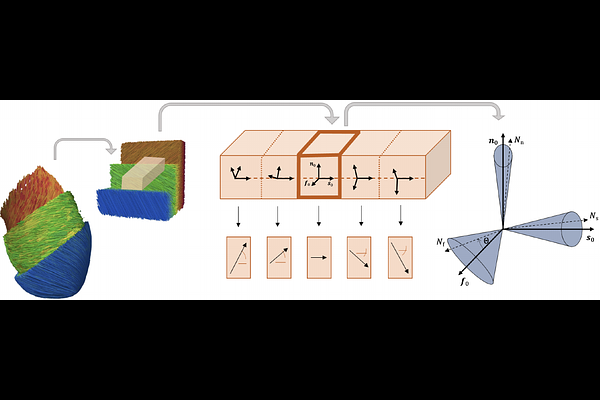Discovering dispersion: How robust is automated model discovery for human myocardial tissue?

Discovering dispersion: How robust is automated model discovery for human myocardial tissue?
Martonova, D.; Leyendecker, S.; Holzapfel, G. A.; Kuhl, E.
AbstractComputational modeling has become an integral tool for understanding the interaction between structural organization and functional behavior in a wide range of biological tissues, including the human myocardium. Traditional constitutive models, and recent models generated by automated model discovery, are often based on the simplifying assumption of perfectly aligned fiber families. However, experimental evidence suggests that many fibrous tissues exhibit local dispersion, which can significantly influence their mechanical behavior. Here, we integrate the generalized structure tensor (GST) approach into automated material model discovery to represent fibers that are distributed with rotational symmetry around three mean orthogonal directions, fiber, sheet, and normal, by using probabilistic descriptions of the orientation. Using biaxial extension and triaxial shear data from human myocardium, we systematically vary the degree of directional dispersion and stress measurement noise to explore the robustness of the discovered models. Our findings reveal that small dispersion in the fiber direction and arbitrary dispersion in the sheet and normal directions improve the goodness of fit and enable recovery of a previously proposed four-term model in terms of the isotropic second invariant, two dispersed anisotropic invariants and one coupling invariant. Our approach demonstrates strong robustness and consistently identifies similar model terms, even in the presence of up to 7% random noise in the stress data. In summary, our study suggests that automated model discovery based on the powerful generalized structure tensors is robust to noise and captures microstructural uncertainty and heterogeneity in a physiologically meaningful way.